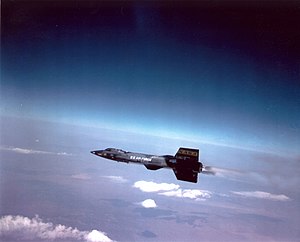Spaceships
 A spacecraft or spaceship is a vehicle, vessel or machine designed for spaceflight. Spacecraft are used for a variety of purposes, including communications, earth observation, meteorology, navigation, planetary exploration and transportation of humans and cargo.
A spacecraft or spaceship is a vehicle, vessel or machine designed for spaceflight. Spacecraft are used for a variety of purposes, including communications, earth observation, meteorology, navigation, planetary exploration and transportation of humans and cargo.
On a sub-orbital spaceflight, a spacecraft enters space and then returns to the surface, without having gone into an orbit. For orbital spaceflights, spacecraft enter closed orbits around the Earth or around other celestial bodies. Spacecraft used for human spaceflight carry people on board as crew or passengers from start or on orbit (space stations) only, while those used for robotic space missions operate either autonomously or telerobotically. Robotic spacecraft used to support scientific research are space probes. Robotic spacecraft that remain in orbit around a planetary body are artificial satellites. Only a handful of interstellar probes, such as Pioneer 10 and 11, Voyager 1 and 2, and New Horizons, are currently on trajectories that leave our Solar System.
Orbital spacecraft may be recoverable or not. By method of reentry to Earth they may be divided in non-winged space capsules and winged spaceplanes.
Currently, only a few nations have spaceflight technology: Russia (Russian Federal Space Agency), the United States (NASA, the US Air Force, SpaceX (a U.S private aerospace company), the European Union (European Space Agency), the People's Republic of China (China National Space Administration), Japan (Japan Aerospace Exploration Agency), and India (Indian Space Research Organisation). As of 2012, only the U.S., Russia, India and China have demonstrated human spaceflight capability.
Spacecraft (spaceship) and space travel are common themes in works of science fiction.
Sub-orbital Spaceflight
A sub-orbital space flight is a spaceflight in which the spacecraft reaches space, but its trajectory intersects the atmosphere or surface of the gravitating body from which it was launched, so that it does not complete one orbital revolution.
For example, the path of an object launched from Earth that reaches 100 km (62 mi) above sea level, and then falls back to Earth, is considered a sub-orbital spaceflight. Some sub-orbital flights have been undertaken to test spacecraft and launch vehicles later intended for orbital spaceflight. Other vehicles are specifically designed only for sub-orbital flight; examples include manned vehicles such as the X-15 and SpaceShipOne, and unmanned ones such as ICBMs and sounding rockets.
Sub-orbital spaceflights are distinct from flights that attain orbit but use retro-rockets to deorbit after less than one full orbital period. Thus the flights of the Fractional Orbital Bombardment System would not be considered sub-orbital; instead these are simply considered flights to low Earth orbit.
Usually a rocket is used, but experimentally a sub-orbital spaceflight has also been achieved with a space gun.

0 comments:
Post a Comment